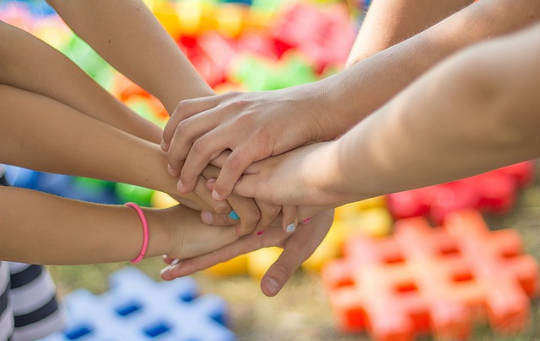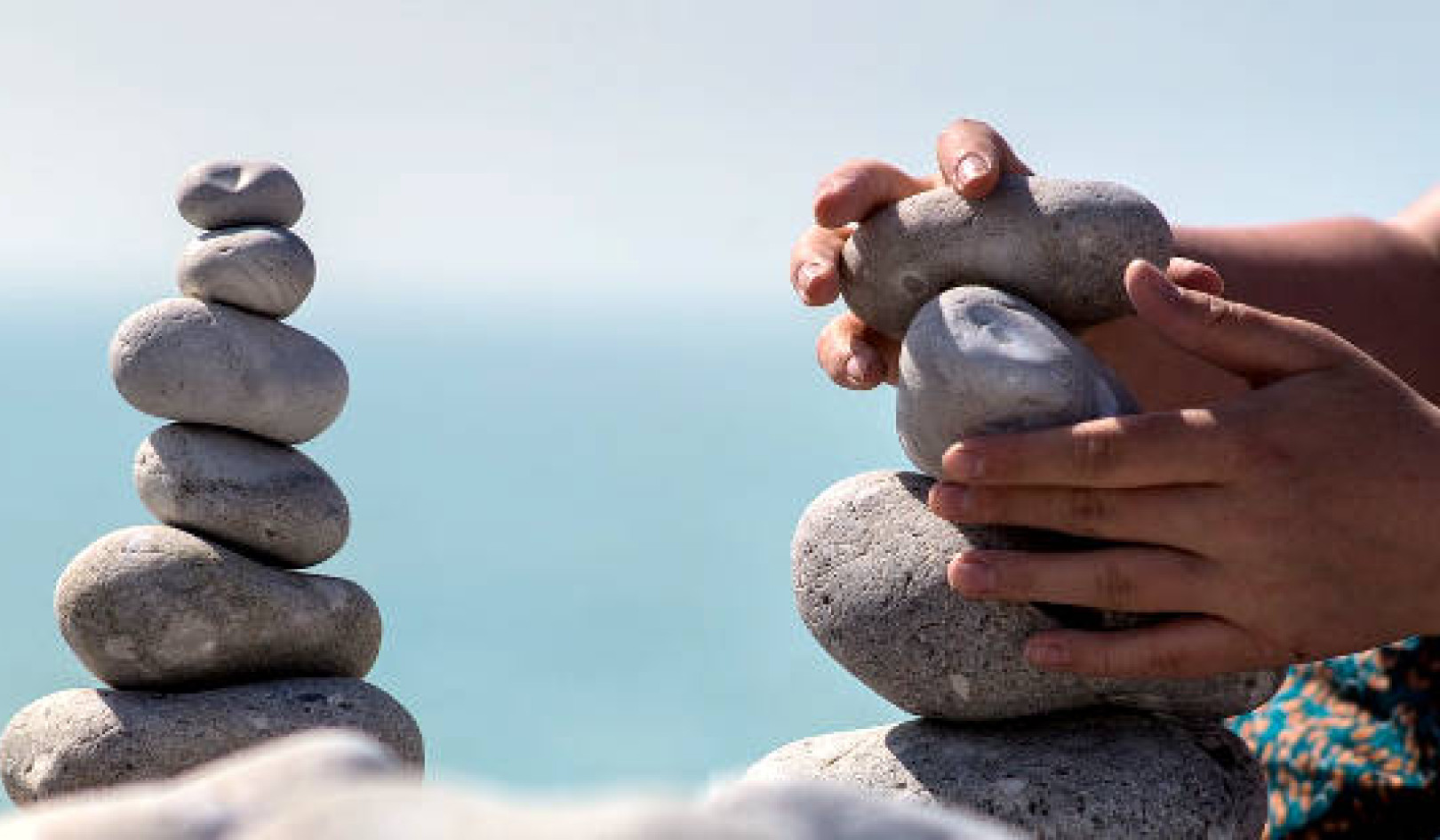
We like to think of ourselves as one congruent identity, one Self. Whether we are a forty-five-year-old businessman, a twenty-year-old college student or a seventy-year-old retiree, what we think of ourselves is based on what we are currently doing and who we believe ourselves to be.
The difficulty is that our bodies, once they have experienced trauma or overwhelm, no longer recognize or see themselves as a cohesive consciousness; they are fractured and no longer recognize the whole. We are not just one Self; we are composed of many different selves.
When our bodies experience pain or trauma, they not only freeze but individual body parts remove themselves from the body map. These parts of ourselves are frozen in time in an unhealed state, constantly looping or repeating their wounds, hoping that they will one day be heard and healed. Our inner selves and parts of ourselves that have experienced trauma rarely understand that we are not six, or fifteen, or fifty-five any more.
Many Different Aspects of Self
We may have many different aspects of Self all along our personal timeline. By offering these parts of ourselves from a younger age the closure and healing they need, they can “unfreeze” and we will no longer find ourselves “looping” or reacting from the place of this unhealed part of ourselves. We will also find that the beliefs of that six-year-old, once they have been healed and integrated, have disappeared and no longer affect our lives as they once did.
To offer a simple example, I will say that if we were a six-year-old whose parents divorced, we likely had a limited capacity to deal with that situation. We were six, with the intellect and understanding level of a six-year-old. This six-year-old was not able to process the emotions and experiences of that divorce. The body deva then sectioned off, or separated, this part of ourselves in our physical body. The body consciousness does this so that we can move on with our lives reasonably intact, but a part of us is frozen at that age, with the emotions and unprocessed overwhelm still located within us.
That six-year-old may be angry, unsure of what is going on, and has relied on sweets to self-soothe. We may now be thirty years old, but there is still a part of ourselves that is six, with the beliefs, traumas, and other unhealed and overwhelming material still informing our thirty-year-old self.
Reverting To Being A Six-Year-Old
Every time we run across a situation that triggers the wounds of the six-year-old we revert to being six and run to sweets to self-soothe. We may feel a part of us is confused and unclear about relationships, or that our relationships fail because we hold the belief that “all men or women cheat” (if this was what precipitated the divorce). Or we may feel immense grief, or anger, and in our current lives there is limited reason for us to feel this way.
If we work with this “inner child,” the part of ourselves sectioned off by our body deva, we can release the anger, pain, and beliefs that were created out of this situation, and our body deva can allow it to be a part of us again. We may find ourselves experiencing less pain and more sensation in the area of the body where our “six-year-old” was once sectioned off, if we heal this inner child in full or in part. We may also find that the needs of that six-year-old (the craving for sweets) disappears or at the very least recedes into the background a bit.
We are also likely to find that we no longer “loop”—no longer revert to acting like a six-year-old and acting out their pain and limited resources (reaching for sweets and getting angry) every time their pain, or something reminding them of the original situation, occurs. This is because the six-year-old is no longer frozen, “looping” and in need of healing; they are simply an integrated aspect of our adult selves now.
Understanding Our Unhealed Self
The wonderful part of doing this work is that it is not a logical or scientific process. The point is not the story, or the endless mental recitation of conscious memories, but of becoming conscious of what lies within, acknowledging the “loop” (or understanding how this unhealed self and their beliefs affect us in our present-day reality), offering compassion, then releasing the beliefs and emotions so that the part of us that has separated can become healed and part of an integrated, healthy whole.
In traditional therapies or even mind-body work, we might begin to work with our inner children by consciously picking a time or experience that we know has impacted us. This may provide a great deal of healing for us, or be necessary in our process. But when we “freeze,” or section off parts of ourselves, we may not consciously remember them. By communicating with the body deva we can find these parts of ourselves that are below (or deeper) than our conscious recollection.
It does take a bit of an open mind as well as willingness to move beyond the mental and logical. This work can turn into endless mental gymnastics, or be focused solely on the mental realm, if the work is not done through the physical body in conjunction with the body deva. The focus here is not on mental story, but on shifts in the body, a shift in beliefs, and changes in the body map, as well as the visuals and “felt senses,” or what we feel in our bodies, that have emerged. This is always paired with the ability to be compassionate toward ourselves. Working in this manner will allow you to be more successful with some of the more “spiritual” work, such as working with past lives, or very young aspects of self.
Although it is rather clichéd at this point, the metaphor of healing being like peeling an onion is always apt. We may be willing to work with our inner four-year-old’s anger about life experiences she cannot understand, but once that anger is healed, that same four-year-old may now be filled with despair from the same event. We may find that we have multiple parts of ourselves frozen at the age of four. We, again, are complex beings with complex reasons for our imbalances. Having compassion and being willing to work with an inner child, even if it is multiple times, is going to provide the best results.
How to Work with Your Inner Children
Although you can pick an event or age that sticks out in your mind, I caution against it. It is best in this work to be intuitive, and to flex your intuitive (rather than mental) muscles here. If we allow our intuition, or sense of knowing, to emerge, even if we feel a bit silly or lack confidence while doing it, it is highly likely that different, or new, information will be received.
Our mentally and intellectually based minds may believe that our anger is coming from a specific age. Working with that age may be very fruitful, but when you go in with an open mind you may find an inner surly teenager instead of an inner angry six-year-old, and working with that teenager would provide the most healing, or the healing that you need right now.
When we are under stress or emotional in our current adult lives, we tend to activate, or energize, these unhealed inner children. When we get angry, we may revert to being a sullen teenager. When we feel out of control, we may revert to being a two-year-old who really wants her mommy. Inquiring how old we are when we feel emotional or “wounded” in our daily lives can give us an excellent indication of what sort of inner children we have lurking within.
Similarly, you may start out with a specific age or experience you wish to work with. You would then recall that time (for example, when you were picked on in the high school cafeteria) and inquire where in your body that experience was held.
Richard
Richard initially came to me with a lot of pain in his mid-back area. He had visited a number of doctors, an acupuncturist, and several massage therapists seeking relief. While he did find relief through those methods, his pain always came back a few days later. He went through further tests and found out that his pain corresponded to his gallbladder and began to cut out foods from his diet that were high in fat and grease. When he focused on the pain, he found that it was like a rope burn and brought up the emotion of grief. He focused on his gallbladder and asked if it was an inner child pattern. His gallbladder replied yes, and so he proceeded. When he asked what age the inner child was, he was told that the child was age fourteen. He visualized himself at a school dance. He had gone there with a girl, but she had ended up dancing with another boy. He asked what the fourteen-year-old needed, and he replied that he wanted to be seen and liked. Richard then asked what beliefs were created, and heard the reply that nobody liked him, or ever would.
Upon hearing this, he realized that a deeper pattern was emerging. He visualized his fourteen-year-old getting what he needed but realized that what he was hearing were the words of his father telling his mother that she was worthless. He remembered being eight and feeling helpless that he couldn’t do anything to protect his mother from his abusive father.
He clearly saw this eight-year-old crouching in the corner of his living room, trying to keep out of his father’s way. At first, a surge of anger came up in him, but he asked what his inner eight-year-old wanted, and the child said that he wanted everyone to be okay and get along.
Richard felt a lot of resistance to this. He visualized his resistance and worked with it. He began to realize that there was a part of him that didn’t want his father to be okay and realized that his current adult self was preventing his inner eight-year-old from receiving healing. He worked step by step with his resistance over a few sessions, beginning to ask his body to release the emotions that it held, and gradually felt decreasing pain as well as emotions in his diaphragm. He then was able to move forward with allowing the inner child to receive what he needed.
As Richard was doing this work, he noticed that his outer world was changing. He had previously kept to himself, as he figured that nobody liked him or wanted him around, but colleagues were now talking to him more at work, and he began to realize that his inner child was preventing him from seeing the world clearly and that people could like him.
Gradually, his inner child healed, releasing layers of anger and pain and fear. Richard patiently saw this through. He found that he no longer had pain in his body, related better to others, and that while he still had to watch his diet, he could (occasionally) eat a deep-dish pizza or burger without pain.
©2018 by Mary Mueller Shutan. All Rights Reserved.
Publisher: Findhorn Press, an imprint of Inner Traditions Intl.
www.findhornpress.com and www.innertraditions.com
Article Source
The Body Deva: Working with the Spiritual Consciousness of the Body
by Mary Mueller Shutan
 In this step-by-step guide to understanding and working with the body deva, the consciousness of your body, Mary Mueller Shutan explains how our bodies hold the traumatic energies, emotions, physical issues, and restricting beliefs that cause us pain and feelings of disconnection. She details how to make contact and dialogue with your body deva to heal a variety of issues, from physical pains to ancestral and past life patterns to limiting ideas about what we can accomplish in this world.
In this step-by-step guide to understanding and working with the body deva, the consciousness of your body, Mary Mueller Shutan explains how our bodies hold the traumatic energies, emotions, physical issues, and restricting beliefs that cause us pain and feelings of disconnection. She details how to make contact and dialogue with your body deva to heal a variety of issues, from physical pains to ancestral and past life patterns to limiting ideas about what we can accomplish in this world.
Click here for more info and/or to order this paperback book or purchase the Kindle edition.
About the Author
 Mary Mueller Shutan is an acupuncturist, herbalist, craniosacral therapist, zero balancer, and spiritual healer. Author of The Spiritual Awakening Guide and Managing Psychic Abilities, she has helped hundreds of people worldwide through her programs and consultations. Visit her website at www.maryshutan.com
Mary Mueller Shutan is an acupuncturist, herbalist, craniosacral therapist, zero balancer, and spiritual healer. Author of The Spiritual Awakening Guide and Managing Psychic Abilities, she has helped hundreds of people worldwide through her programs and consultations. Visit her website at www.maryshutan.com
Books by this Author
at InnerSelf Market and Amazon



























